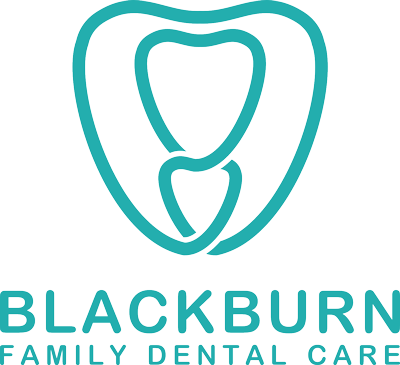With the advancement of technology and science, getting your perfect smile is no longer just a dream. In the 21st century, restorative dentistry procedures and cosmetic dentistry have boomed to offer solutions to all smile-related problems you can think of – a chipped tooth or a crooked smile is no longer a big deal!
One of the most common restorative dental procedures is getting dental crowns. It is a relatively simple outpatient treatment process that can be done within two visits. Read on to find out more about dental crowns, especially if you are considering getting one.
What are dental crowns?
Dental crowns are exactly what their name suggests – a cap that “crowns” your problematic tooth to permanently restore its aesthetics and function. The hollow, tooth-shaped cap is custom-made to fit your original tooth shape and colour and will be cemented into place, covering the entire circumference of the tooth that lies at and above the gum line.
They can be made of a variety of durable and strong materials, including porcelain, stainless steel, metal alloys, ceramic, and zirconia. Traditionally, crowns were made of a metal alloy that were layered with porcelain. The metal on the inside of the crown was for the purposes of strength, whilst the porcelain allowed the crown to mimic the appearance of natural teeth. This is otherwise known as a PFM (porcelain-fused-to-metal). PFM crowns are still widely used to this day.
As dental crowns are custom-made to fit your teeth, they work like a lock and key – thus making them more durable and retentive. It is rare for a crown to break due to the way they function; more commonly crowns fail because of decay seeping beneath the margin where the crown and the tooth meet. However, with good oral care, your crown can serve you for many years. Some patients even have them for a lifetime!
When would you need a dental crown?
Your dentist may recommend dental crowns if you have:
- A tooth that has fillings which have become loose, is cracked, chipped, or broken.
- A tooth that exhibits signs and symptoms of cracking.
- A tooth with large amalgam/grey fillings especially in the centre of the tooth.
- Discoloured teeth, due to previous restorations or root canal treated teeth.
- Worn-down teeth from uncontrollable grinding, or an unaligned bite (eg patients with anterior open bites).
- Teeth that have undergone root canal treatment.
- Large gaps between your teeth which collect plaque and food.
- To replace a missing tooth utilising a dental bridge (which consist of 2 or more crowns) or to support particularly metallic frame dentures.
- Teeth that have undergone trauma (eg crown root fractures)
Crowns can also be part of an aesthetic or cosmetic makeover for the front teeth as some teeth which cannot be veneered due to structural issues can still benefit from the retentive features of crowns. Besides that, crowns can be placed to restore single or multiple teeth implant fixtures as well.
What are the types of dental crowns available?
There are five common types of dental crowns that dentists use, which are metal, ceramic, porcelain-metal, stainless steel, and resin:
- Metal Crowns: These are the sturdiest, most durable types of dental crowns. They are made out of metal alloys, which are created by mixing two or more pure metals. Metal crowns are very difficult to corrode, resistant to wear, and provide great strength for your teeth. Your dentist will only remove a small portion of your tooth to fix in a metal crown as only a thin layer is needed for cover. Metallic crowns with gold alloys are the preferred crowns for situations with cracked teeth.
- Ceramic Crowns: Ceramic crowns are sometimes also called porcelain crowns, as porcelain is a type of ceramic material. They provide a natural appearance that is almost indistinguishable from your teeth. Ceramic crowns are also an excellent option for those who have metal allergies. On the downside, certain types of ceramic crowns wear down opposing teeth – especially the zirconia crowns, which are the sturdiest type of ceramic crown available. As a general rule, the ceramic crown’s hardness or strength correlates to its translucency. These days, translucent zirconia crowns have also made an appearance, although they are not as strong as traditional zirconia. Additionally, ceramic crowns may necessitate the removal of more tooth structures depending on the thickness of the porcelain material used. Although rare, they also pose a greater risk of fracture.
- Porcelain-Metal Crowns: Made out of a metal alloy core and layered over with porcelain, the porcelain-fused-to-metal crown (PFM) provides a stronger restoration than a normal porcelain crown. However, they are not as natural-looking as a ceramic crown due to the striking metallic colour of the metal base that requires a thick coat of porcelain to cover. Furthermore, when the gums recede, the underlying metal might become visible as a black line.
- Stainless Steel Crowns: This type of dental crown is used temporarily to protect your tooth or fillings, more commonly used for children. Stainless steel crowns are often preformed, this means that they are “off the shelf” and sizes are selected based on the size of the baby tooth. Although they may not have the best cosmetic appearance, they are very durable and are also the treatment of choice for teeth with deeper fillings in deciduous molars.
- Resin Crowns: They are the least expensive type of dental crown and take half the time to install. Similar to stainless steel crowns, resin crowns are also used as a temporary measure, protecting the tooth or filling until the permanent crown has been made. This metal-free alternative can be mixed in several shades to match the natural colour of your teeth. However, they wear down easily over time and discolour quickly.
What is the procedure for getting a dental crown?
The procedure of installing a dental crown varies according to each individual. Typically, a single crown usually involves a two-visit procedure. The first visit normally takes one hour to prepare the tooth to allow enough clearance for the crown to seat; an impression is then made of your jaws (both with the crowned tooth as well as opposing jaws) to allow the laboratory to replicate how you masticate. It then normally takes 10 days for the laboratory to fabricate the crown to your dentist’s specifications. The second visit involves ensuring the crown is seating well on the tooth before cementing the crown on the prepared tooth. In cases where an individual may require multiple crowns to build up multiple teeth, the process may involve more extensive planning and rehabilitation.
Impressions for the crowns have traditionally been done with a polyvinylsiloxane material in an impression tray. The patient is asked to bite on the tray or the dentist manually manipulates the tray into the patient’s mouth. As technology has advanced, impressions can now be done digitally using 3D scanning technology. A digital scanner is able to take hundreds of precise optical photos of your teeth and stitch them using algorithms to recreate a 3D model of your mouth. 3D scanning technology has made it easier for patients that have a high gag reflex.
There are also dental clinics that offer one-day crowns. Typically, the clinic has an in-house milling machine which is able to fabricate or mill a porcelain crown on the same day utilising “porcelain blocks”. The machine cuts the blocks into the shape of the crown. Usually, one-day crowns can only be made of porcelain for this reason. However, in many situations when an all-ceramic crown may not be the most suitable for the patient’s situation, then the crowns are normally fabricated in the dental laboratory by a trained dental technician.
Before the actual fitting procedure, you will first be required to undergo a complete dental examination to see if your tooth can support a crown – which may include taking x-rays. If there is any form of extensive decay or risk of infection, your dentist will have to treat it first accordingly. This may involve replacing an old restoration that has been on the tooth for many years before the crown preparation or it may also involve doing an elective root canal treatment.
However, if your dentist finds your tooth ready for a dental crown fitting, they will then advise you on what type of crown is most suitable for your tooth and go over the process with you.
Your dentist may ask for a final follow-up appointment to see how your eating habits have affected the crown in the weeks after your dental crown fitting.
What are the risks of getting a dental crown?
As mentioned above, it is apparent that crowns are indicated in vital (tooth that has a nerve) as well as non-vital (root canal treated teeth with no nerve) teeth. The risks of crowning a vital tooth is that the procedure could irritate the nerve in the tooth to the extent where it becomes extremely sensitive and sore. In these rare cases that the nerve is irritated by the procedure of preparing the tooth, it can devitalise (or die off). This risk is relatively low, around less than 2% of cases of crowning vital teeth.
Crowning your tooth vs getting it repaired
Often, a heavily filled tooth with traditional materials is not strong enough to withstand masticatory forces or parafunctional forces depending on the patient. A quick fix in which a repair with another filling might seem to be the most economical option at the time, however it is at most a band-aid or patch up and does not make the tooth more resistant to fracture over time. Often, patients that have had repairs or patch-ups end up coming back repairing the same tooth a couple of years later. Each repair often requires the dentist to remove more tooth to bond onto, which further reduces the amount of original tooth left. There eventually is a time when there are so many repairs on the same tooth that it cannot be repaired any more.
The cost of repairing a tooth multiple times is often more expensive in the long run when the cost of repairs are added up. Furthermore, the crowned tooth often lasts whilst the repaired one will eventually be lost due to insufficient original tooth structure. Nevertheless, it is best to speak to an experienced dentist for a full comprehensive check-up and recommendations on whether some teeth may benefit from crown and bridgework.
At our Blackburn North Dental Clinic, we provide general and cosmetic services ranging from teeth straightening to dental crowns, and more for people of all ages. With over 60 years of experience, our root canal treatment and crown specialists take pride in providing the highest quality services to our patients. Contact us today to find out how we can treat your smile.

